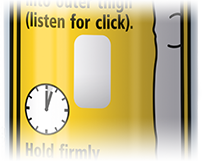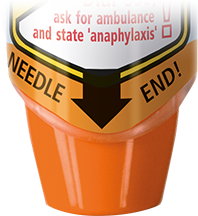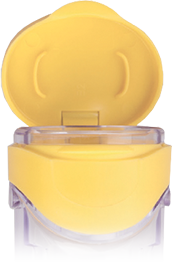EpiPen® auto-injectors are automatic injection devices containing adrenaline for allergic emergencies.
The active ingredient and instructions for use are the same for EpiPen® and EpiPen® Jr so the information here is applicable for EpiPen® or EpiPen® Jr and the term EpiPen® is used throughout to refer to both interchangeably.
EpiPen® and EpiPen® Jr are indicated in the emergency treatment of severe allergic reactions (anaphylaxis) to insect stings or bites, foods, drugs and other allergens as well as idiopathic or exercise induced anaphylaxis.1,2
EpiPen® is an adrenaline auto-injector (AAI) used for self-administration of adrenaline for the emergency treatment of anaphylaxis.1,2
Below is a summary of the key features and benefits of EpiPen®:1,2
- EpiPen® delivers the correct dose of adrenaline quickly
- EpiPen® has needle protection which deploys immediately after administration
- EpiPen® has familiar jab administration and only a 3 second injection hold time during administration in an emergency1,2
| EpiPen® Auto-Injector | Adrenaline concentration | Body weight |
|---|---|---|
| EpiPen® 1 | 0.3mg (0.3ml, 1:1000) | >25kg (3 st. 13 lbs.) |
| EpiPen® Jr 2 | 0.15mg (0.3ml, 1:2000) | 7.5 – 25kg (1 st. 3lbs. – 3 st. 13lbs.) |







